When you purchase through links on our website, we may earn a commission. Affiliate disclosure.
In this Bafang hub motor review, I look at this high-performing and reliable electric bike hub motor. It’s relatively cheap while offering a significant boost in performance for day-to-day riding. This makes it a popular choice among DIY e-bike builders and manufacturers. In this article, I will examine its features, benefits, and drawbacks based on six years of experience with this motor. Find out more about my electric bike conversion service.
Since this article was posted four years ago, Bafang has been very busy! Their hub motors are now found on nearly 70 well-known brands and many lesser-known brands. In addition, the Bafang hub motor range now includes 12 rear motors and three front hub motors covering multiple uses from electric cargo bikes, city bikes and fat tyre e-bike applications.
Key features
- Various power options are available from 250w – 1000w
- Fitment for standard or fat bike wheels
- Supports torque-sensing controller and bottom bracket
- Available in 36v or 48v (will handle up to 52v)
- Available in kit form or as OEM motor on factory e-bikes
- Price: From £250 to £450 depending on the supplier ($300 – $500 approx)
Pros and cons of the Bafang hub motor
Pros
- High torque and efficiency: The Bafang uses a brushless motor with planetary gears. Small geared hub motors produce more torque than direct-drive motors, making them better for climbing hills. They are also much easier to pedal with the power switched off, making them much more suitable for someone who only needs the assist on hills.
- Ease of installation: If you’re fitting the Bafang as part of an e-bike conversion kit, it’s relatively easy to install. The motor kits usually come with all the necessary hardware and instructions, making it a straightforward process even for those without much mechanical experience. Additionally, the motors are available in various wheel sizes, so you should be able to find the right one for your bike.
- Cassette and freewheel gear options: There are two options for gearing – one will take the old-style screw-on freewheel (usually 6 or 7-speed), and the other will take a mountain bike cassette of 8 to 11-speed. The cassette version will not take a road 11-speed (like Shimano 105), as spacing is different and requires a slightly wider freehub.
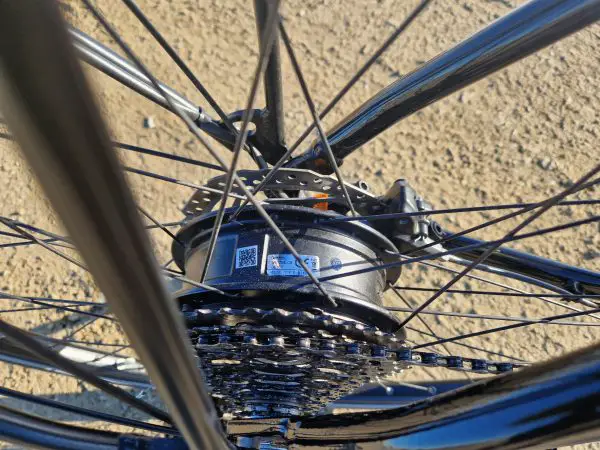
Cons
- Weight: While the Bafang hub motor has many benefits, it has some drawbacks. One of the biggest drawbacks is weight. Although it’s now much lighter than previous incarnations, it still comes in at nearly 3 kg at the lower end.
- Not compatible with modern thru-axles: Another drawback of the Bafang hub motor is it’s only currently available for quick-release dropouts. With an increasing amount of new mountain bikes using thru-axles and boost rear hub spacing. If they want to stay ahead of the game, Bafang must offer this option for DIY e-bike builders.
- Premature motor wear: Reliability is generally good, but as with all electric motors, there can be problems from time to time. I have personally experienced hall sensor failure and premature wear of the nylon planetary gear. If you did experience problems down the line, parts are readily available, and the motor is easy to service for a competent DIY enthusiast.
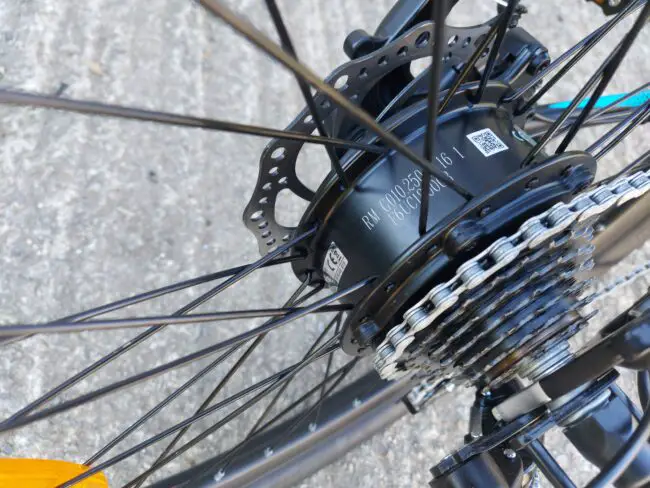
Motor performance: 250w variant
I’ve owned several e-bikes with this motor. Indeed, my latest electric bike uses a 250w Bafang motor. In my experience, Bafang hub motors offer solid performance, from the 250w version right through to the 750w version.
The 250w Bafang hub motor is usually used in conjunction with a 36-volt 15-amp controller. This will give a peak power output (under load) of 540 watts. Peak output will depend on other firmware settings specific to the controller used. In addition, if a 48-volt controller is used, then peak power will be substantially more. I’ve ridden a road-legal e-bike with 48v Bafang 250w, and peak power was showing (on the display) at over 700 watts.
It seems the continuous motor rating (250w) is important for legality, but higher power outputs when under load are acceptable. The Bosch CX motor produces a peak power of around 600 watts.
Bafang offers a torque-sensing option – for OEM only, and unfortunately, not in conversion kits. The new Eskute Polluno Plus has this configuration, and it works well. The torque-sensor unit is housed inside a Bafang-branded bottom bracket. This system works incredibly well – it provides instantaneous electric assist the second you start to pedal. The torque sensor measures the pedalling force and adjusts the motor output accordingly. This drastically improves efficiency and riding experience.
Find out more about the pros and cons of a hub motor vs a mid-drive motor.
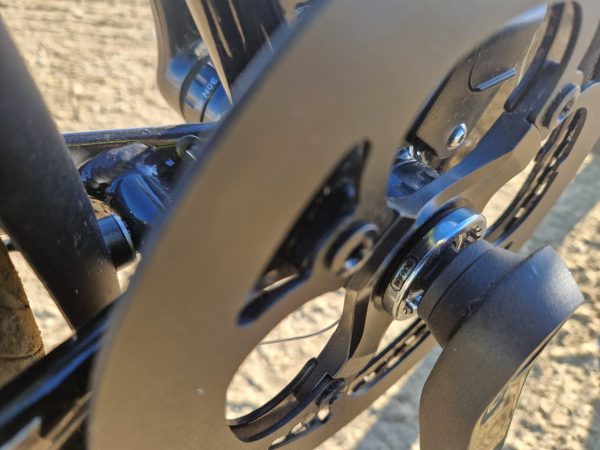
The other option is a cadence sensor – this is found on budget factory electric bikes like the Eskute Voyager, and Bafang e-bike conversion kits. The newer cadence sensor is an enclosed unit that slots into the splines on the bottom bracket. This kind of pedal assist has a much more on / off feel to it – you can ghost pedal (spinning the pedals without effort in a low gear), and you’ll still get assist. Controller firmware is usually programmed so that when a higher cadence is reached, the motor current is dialled back.
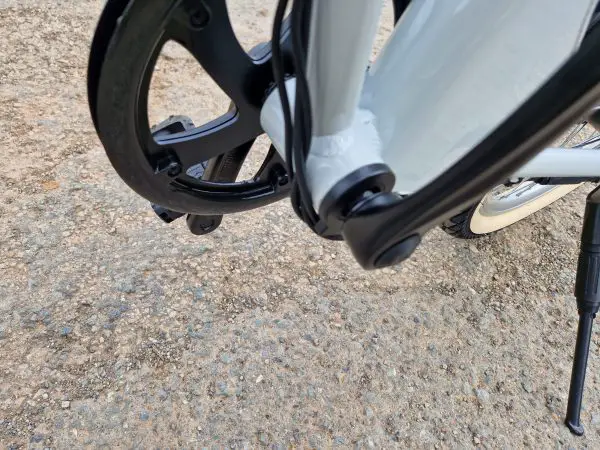
A 250w Bafang hub motor has enough power to comfortably get you up a 10% climb. But, steeper hills will require additional effort from the rider. The gearing on the bike will also be a contributing factor when negotiating steep hills – lower gearing = easier hill climbing.
For a 250-watt hub motor, the Bafang performs very well and will provide enough pedal assistance for most riders. Its limitations are only noticeable on very steep hills, but for moderate hills, it does the job.
Motor performance: 750w variant
The 750-watt Bafang hub motor tested here was fitted to a Cyrusher XF800 fat tyre e-bike. This motor is used in conjunction with a 48-volt 25-amp controller, giving a peak power of 1200 watts. When the battery is fully charged @54.4-volts, peak power will top out at 1360 watts.
Considering the heavy weight of this electric bike (32 kg), the performance of the motor is impressive. The cadence pedal assist sensor delivers a smooth, but strong surge in power. The power builds rapidly and pulls strongly up to 28 mph.
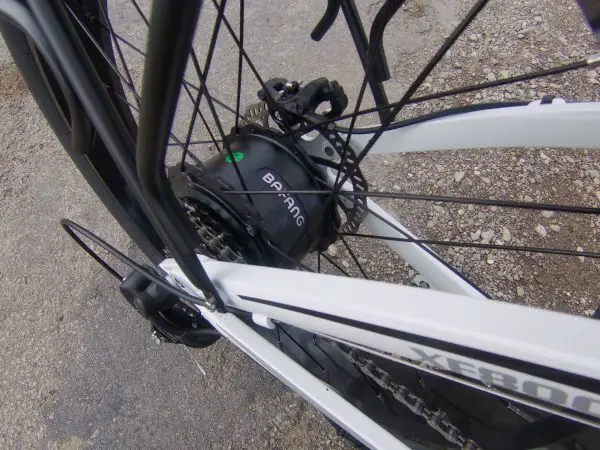
This motor is noticeably noisier than its smaller sibling, but the noise is never intrusive. I tested this particular bike on a couple of very steep climbs with a maximum gradient of around 20%. Although the motor did start to struggle a little on the steepest section, it still got me up there without me getting out of breath.
Where the 750-watt Bafang comes into its own, is on rolling terrain with moderate hills – you can cover ground fast, and it’s not too difficult to keep the average speed above 20 mph.
What’s included in a Bafang e-bike conversion kit
- Front or rear hub motor laced into a rim
- The motor controller (the electronic brain of the system)
- LCD or LED display – for speed, battery range, etc.
- Wiring harness
- Pedal assist sensor
- Brakes with integrated sensors (for mechanical brakes)
I’ve installed, both the 250-watt and 500-watt versions of the Bafang e-bike conversion kit. These kits are a great way to give old, unloved bikes a new lease of life.
Compatibility
Before buying one of these kits, you’ll need to check the wheel size of your bike. If you do not know the size, it can be found on the side of the tire, for example, 26″ / 599 (ISO) 27.5 / 584 (ISO) 28″ / 622 (ISO) – PLEASE NOTE: If you are installing this kit on a 29er mountain bike, then you will require the 28″ (622) wheel size. For more information on tyre and wheel sizes, check out this tyre and wheel sizing article by the great Sheldon Brown.
These motor kits are only compatible with standard rear drop-outs (135mm wide). They will not fit bikes with thru-axles. Nearly all cheaper bikes have standard quick-release dropouts. But if you are considering installing this kit on a higher-end mountain bike or road bike, you must double-check. The fat bike version of these kits will be compatible with the wider 175mm dropouts of those bikes.
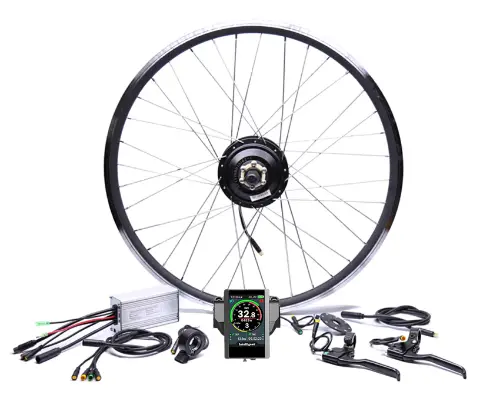
Finally, You will need to check the kind of bottom bracket your bike has fitted. If it is a standard square-tapered BB, then the pedal sensor should fit. If, however, you have an Octalink / ISIS or Hollowtech ll type BB, then you will need to purchase a separate pedal assist sensor.
If your bike has flat handlebars with mechanical rim or disc brakes, the supplied brake levers with cut-off sensors will be a straight swap. Unless you have integrated gear shifters and brake levers, you have hydraulic brakes, or you have drop handlebar (STi) shifters.
Installation
Installing a Bafang hub motor conversion kit is straightforward, and requires minimal skill – it should take roughly 2-3 hours to complete the job. It should be noted that you will require a basic bicycle maintenance tool kit to do the job properly. Things like a crank puller are essential to remove the right side pedal crank to fit the pedal assist sensor.
The installation process involves removing your existing wheel and swapping over your rim tape, inner tube, tire and any other components like disc brake rotor and gear cassette/freewheel. You install the motorised wheel and fit the other ancillary components like the pedal sensor, display and battery. Plug everything in, and away you go!
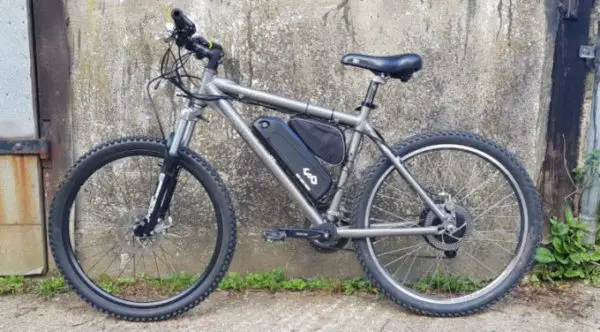
Conclusion
Overall, the Bafang hub motor is one of the best available. They are generally durable, and fairly weatherproof. Out of the dozens of kits I’ve installed over the years, there have been very few long-term issues. One of the big benefits of fitting a Bafang hub motor over a mid-drive is there’s hardly any pedalling resistance. Plus, fewer internal parts to go wrong.
From the perspective of an e-bike buyer, thinking of purchasing a factory electric bike with a Bafang motor, I can highly recommend it. Out of all the e-bikes I’ve tested over the last few years. I can’t think of a single time, a Bafang has given me cause for concern. That’s not to say problems don’t arise from time to time, but my personal experiences with this motor have been positive. Even in 250-watt form, it produces a good turn of speed and a very useful boost on hills. If you are regularly riding very steep hills, I would stick with a mid-drive.
The 750-watt version is a joy to ride and a great mile-muncher! Fit a 52-volt battery with a 25-amp controller, and you will have peak power approaching 1500 watts – this is the maximum recommended output for this motor, and you shouldn’t go beyond that.
All in all, the Bafang hub motor is a great choice whether you’re thinking of converting a bike or buying a factory e-bike.
Thanks for reading my Bafang hub motor review. If you have any questions, please feel free to leave a message in the comments section below – I aim to answer all queries within 24hrs.
Specifications
The specifications below cover the whole spectrum of Bafang hub motors, ranging from their e-city range to their e-cargo and e-MTB motors. Most e-bike conversion kits that use the Bafang motor will be the standard G20 model.
| Motor Fitment | Front or Rear Hub Motor |
| Motor Power | 250w – 1000w |
| Motor Voltage | 36-volt or 48-volt |
| Motor Torque | 35Nm to 95Nm |
| Compatibility | Quick-release dropouts |
| Dropout Width | 100mm (front) – 135mm (rear) 175mm (fat tire bike) |
| Motor Weight | 2.75 kg – 4.5 kg (approximate) |

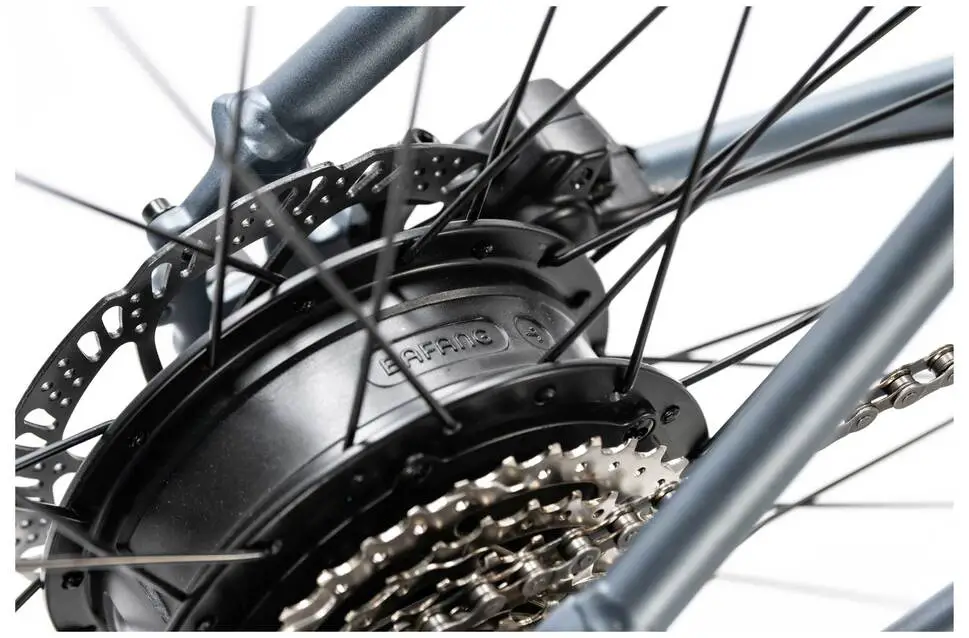
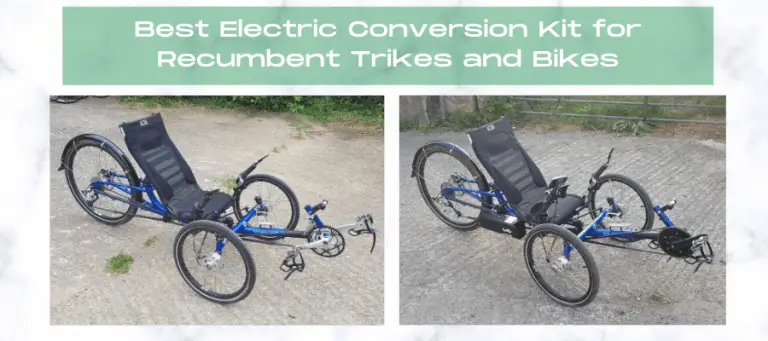
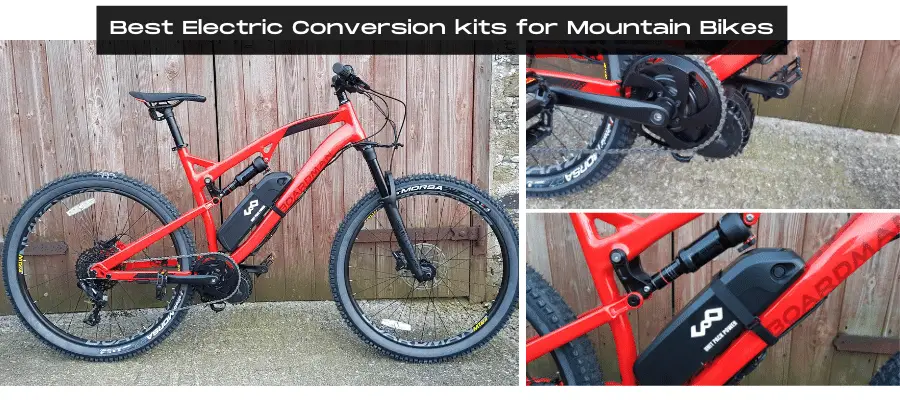
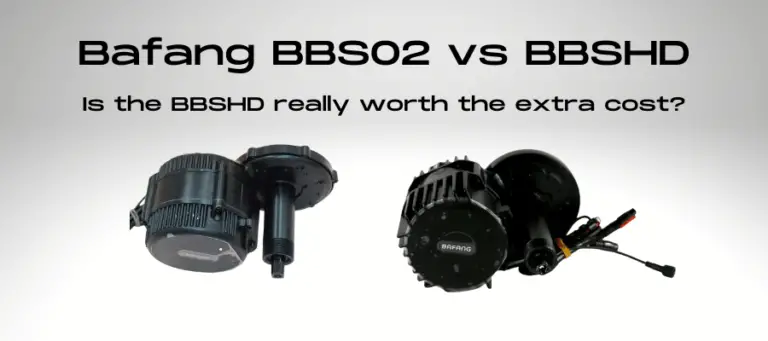
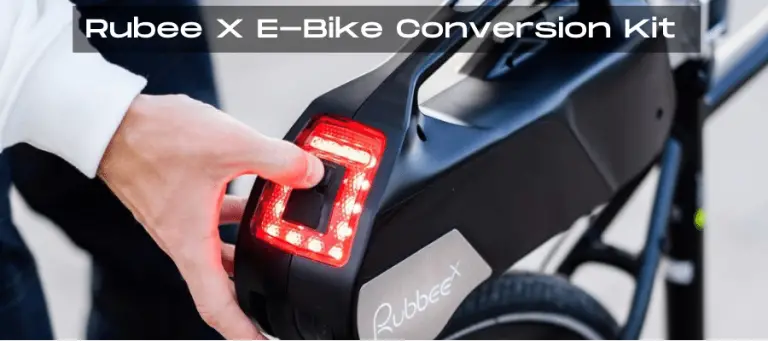
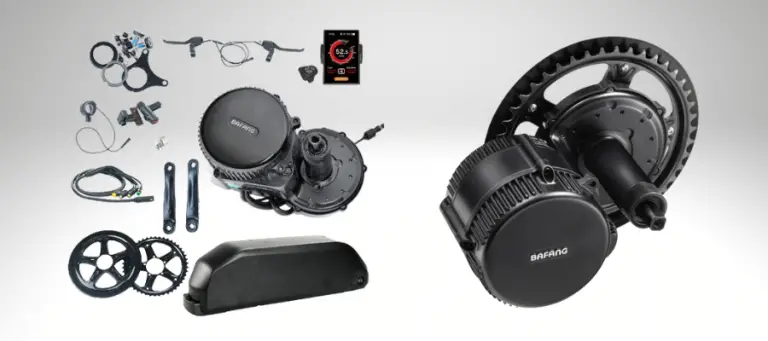
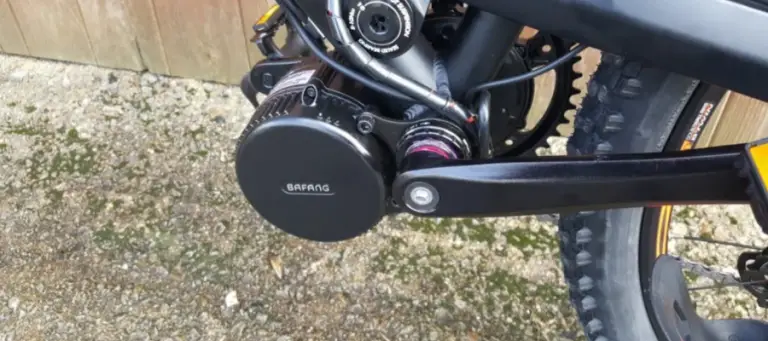
Hello Tony,
Thanx for your nice post.
In the specifications of the bafang hub 250w, what means the different values of rpm ?
Best regards,
Remy
Hi Remy
As I understand it, the different RPM Values may refer to the windings in the motor. I believe the Bafang CST hub motor is available with 3 winding configurations. Voltage would also effect motor RPM.
All the best,
Tony
Tony – thanks for your excellent website. After much study I thought I had reached a decision – a Bafang 250w rear hub but am having trouble finding a full kit to fit my old hybrid bike. My particular specs are – 26 inch, 130mm between dropouts, cassette and centre pull rim brakes. The brakes were a problem for one ebay supplier – greenergia – who seemed to otherwise offer a wide choice of options – ‘discs only except for the 20 inch wheel’ was his response.
I am not keen on lacing my old rim to a new hub as I haven’t got the kit needed. Is there some reason why the Bafangs only go with disc brakes or could you point me towards someone who can do a kit to fit my needs?
Many thanks
Colin
Hi Colin,
Thanks for your feedback, glad you like my website.
In answer to your question, it sounds as though your bike has cantilever brakes fitted. I have checked the listing on eBay and it looks like they only offer the kit in a disc specific rim (as in the rim doesn’t have a braking surface for rim brakes).
Bafang motors will fit disc or non-disc bikes. There is a kit available on eBay from a seller I have used many times before. It is a 26″ rear wheel Bafang 250w kit, with the correct rim. The only issue is you will need a 7 or 8 speed freewheel, as it is not cassette compatible. Here is the link for that kit.
Personally, I would stick with the freewheel variant, as I have had a couple of freehubs prematurely fail in the past, and replacing them on one of these motors is a right pain!
If you need any more advice, let me know.
Regards,
Tony
Many thanks for the instant reply Tony. I’ll go for that one – I’ll give up on the cassette as you suggest.
There seemed to be so many choices on offer I felt as though my options had to be out there somewhere…but could not find the needle in that, very big haystack. It was driving me nuts.
All the best
Colin
Hi Tony
I am from New Zealand and this is my first letter to your very good website.
In September 2019 I bought a purpose built fold up bike that came with a 48v 500w Bafang. The bike has 20inch wheels with large 20 x 4.0 tyres. To-date I have done just on 900km.
The bike has 5 power bands and 7 gears on the chain.
I have 2 questions, which I would be grateful if you can answer.
1. If I am in the 3rd power band and 7th gear I need to peddle nearly as fast as I can to keep up with the motor. In other words it needs a higher gear or 2 so that if I want to (on the flat) I can use the 4th & 5th power bands. I have thought about fitting a smaller sprocket at the pedals, which would raise all 7 gears. (I have never had to use 1st & 2nd gears even though I live up a steep hill so that wouldn’t be a problem) Also, as it is 85% of my riding is in either 6th or 7th gear, which is going to wear the 2 smallest sprockets very quickly.
Question 1: Would fitting a smaller sprocket at the pedals upset the relationship with the controller? or is there a better way of achieving higher gearing?
2. When on the flat in the 3rd power band & 7th gear the motor makes this loud wha wha wha noise. It sounds a bit like a worn differential in a car. It makes the same noise in 4th & 5th power band but faster. The noise is such that people turn around to see what sort of alien machine is coming up behind them. I guess it saves me ringing the bell! It is much quieter & doesn’t seem to make this noise in 1st & 2nd. As my bike has a 12 month warranty I took it back to the supplier who simply said it was fine but it doesn’t sound fine to me. May-be I should invest in some ear muffs!
Question 2: Is this noise normal for these motors?
Many thanks
Gary
Hi Gary,
I just got a foldable ebike with the 36V 250W Bafang and I have the same “loud wha wha wha noise”. For me it’s 5th power band 7th gear and starts when the bike is a 27km/h speed (motor runs until 30km/h).
Did you find out where this came from by any chance?
Definitely doesn’t sound fine to me either…
Thanks!
Bob
Hi Gary,
Regarding gearing, you would need a larger chainring on the front to raise the gearing, something like a 48T or 50T sprocket. If your bike has a standard Shimano 7-speed rear gear freewheel the gear ratios are probably 14-28t, ideally you would need an 11-28t freewheel for higher gearing. A 50t front ring combined with an 11t rear would equate to 32mph at a pedalling cadence of 90rpm. A local bike shop should be able to supply and install the necessary parts for you. Changing the gearing won’t effect the electric assist or controller in any way.
Regarding the motor noise. The Bafang hub motor has internal planetary gears, so it is noisier than a direct drive hub motor. Having said that, I’ve installed a lot of these motors and the noise shouldn’t be much more than an audible whine. If there is some play in the bearings in the planetary gear system, this may be causing the extra noise. It may also be simply a case of the gears needing a bit more grease – the motors are quite straightforward to work on, so maybe you should see if the supplier is willing to have a look at it.
If you have any more questions, please let me know.
Cheers,
Tony
Hi Tony
Excellent website, possibly the most comprehensive and informative I’ve come across! Well done 🙂 I have a question that you may be able to answer from your wide experience of different systems.
I have quite a number of home-made recumbents, two MTBs and a cargo bike, and for some time I’ve been thinking of adding some electric assist for the steep hills where I live. I’d be looking primarily for torque rather than speed, so I’m hesitating between a 500Wish mid-drive or a heftier 750+W geared rear hub motor. Since I have so many bikes – but not a corresponding amount of spare cash – I would really like to be able to swap the electric assist across them. I seem to spend half my life swapping wheels, bottom brackets, chainsets etc etc between my bikes, so the prospect of regularly swapping out a mid-drive or a rear wheel plus all the controller bits isn’t a problem for me. The mid-drives might be the better overall choice, especially for the weight distribution on my mountain bikes on very rough trails. But realistically would a mid-drive like the TSDZ2 or BBS02 stand up to repeated removal and refitting?
Any comments appreciated. Thanks. Nick
Hi Nick,
Thank you for your comments, very much appreciated!
In answer to your question, mid-drive vs hub motor would really depend on the configuration of your recumbents. The good thing about mid-drive motors like the Tongsheng and Bafang is the controller and pedal sensor is integrated into the motor unit. The only other things you would need to move is the speed sensor,wheel magnet and display / keypad. If you had your battery inside a pannier bag, then that would be easy enough to move from bike to bike.
The Tongsheng is easier to mount on a regular recumbent as you can use a steel collar to secure the motor on the boom, whereas the Bafang can have a tendency to move in the BB shell, regardless of how much you tighten the lock-ring.
A hub motor would probably be easier. You could buy several pedal sensors and have them in situ (on each bike), and then have the controller in a box or bag, then it would just be a case of swapping the wheel and display over.
I don’t see any problem with repeatedly swapping over the mid-drive units, but I would say the Bafang is probably the more robust of the two units particularly if you are riding off-road a lot. You may need to purchase some spare lock-rings for the Bafang as they do tend to deteriorate a little when removed regularly.
If you need any more advice, please let me know.
All the best,
Tony
Tony~
I’m wanting a “cool looking” daily rider that has a rack in the back to haul stuff. I want to spend under $2,000. I almost bought the Super73 oddly enough at Costco, but when I clicked the button, I learned they were out of stock. So I started researching again. I’ve learned almost everybody sources their bikes from China. So I began digging into Alibaba. I found one that looked like the Super73 and asked the sales person to give me the biggest/best motor, battery, controller, etc. Am I being a stupid American getting a 1000 watt rear hub bafang 48v motor, 48V 17.5Ah sumsung / LG Li-ion battery, BAFANG Color LCD48V and BAFANG 48v 25A controller? Or is that a sweet bike for under $2k?
Thank you in advance!
~Jim
I have learnt alot about ebikes over the past month or2 since covid. I was given a 200w bafang front hub geared ebike. Heard a clicking in motor and pulled motor apart to find 1 of the planetry gears missing 2 teeth. Its going to take 6 weeks to get new ones. So I bought a 350w hub motor unbranded only id DWB36V350W on the axle hub.I connected this to the original wiring for the bafang and it worked. Put the wheel on and went for a ride could only pedal twice and the motor cut out,pedal twice again motor cut out,and kept doing this.Only went about 50m to test. Can you maybe advise me whether using the bafang wiring maybe the problem. But worked well when the bike was upside down. Only played up when put back on 2 wheels with a bit of load. Thank you Charmaine.
Hi,
If you’re using it with a 36v battery I can’t see where the problem would be. Most hub motors (including Bafang) have a multi-plug connector that has 3 phase wires (blue, yellow, green) positive / negative and hall sensors wires (usually a 5 or 6-pin connector block. If you have a Higo connector (circular waterproof type) it might be worth checking that none of the connector pins are bent. I could also possibly be a fault with the pedal assist sensor.
Let me know how things go.
Regards,
Tony
Hi Jim,
That sounds like a pretty good deal to me. A 48v Bafang hub motor with that controller and battery should be peaking at over 1300 watts (on a freshly charged battery. Should be a fun ride, and good for 30mph.
If you go ahead and buy one, let me know how it goes.
Cheers,
Tony
Hello everyone,
Warm greetings to all of you, i would like to share with you some of the Bafang motors products you may feel interested. I have huge interests in Ebikes products, here is the link for the product i like visit this link: AliExpress.com Product – BAFANG 8fun Electric Bike Conversion Kit 36V 48V 250W 350W 500W Motor Wheel for 26″ 27.5 700C 28″ Bike Electric 8fun BMP BAFANG
Hi there?
Do you by any chance have the owner’s manual for the Bafang G310 Hub motor?
If you do can you please send it to me through my email?
Regards,
Michael
Hi Michael,
Unfortunately I don’t have a manual for the Bafang G310 motor, but if you need to carry out maintenance, the motor is fairly straightforward to work on. Here is a link to a good YouTube video detailing dismantling and the components. There is also some very good technical information over at endless-sphere.com.
Regards,
Tony
I feel you offer more e-bike information than any site i have came across! Thank you. I have a ICE Adventure trike with a 20 in rear wheel. I am looking for a dealer who has experience with these trikes and can sell me a good complete rear hub kit. Any suggestion? Thank you,Dave
Hi Dave,
Electric Spokes in NJ have a couple of Trike conversion kits listed on their website, although the only one I could see that would be suitable was a direct drive 500w rear hub motor (which would be inefficient) – Here is a link to their website.
Glen at Mid Island Adventures in Vancouver Island really knows his stuff when it comes to converting recumbent trikes. I’m fairly sure he can recommend and supply the right kit for you as well.
I’ve converted quite a few Ice Trikes, and ideally you would want a Bafang or MXUS hub motor that has a cassette freehub, you will also need to extend the pedal sensor lead going from the bottom bracket to the motor controller.
I have written a separate article on converting Recumbent’s here.
If you need any more advice, let me know.
Cheers,
Tony
Hi Tony,
I have ordered a Bafang 48v 500w front kit for a light Specialized commuter bike. I’ll mount the battery on the rear rack for balance. The rim size is 700c and I need a tyre and tube. I am looking at the Continental Contact Plus Reflex wire tyre. It comes in 28, 32 and 37 widths. I would like to put the 37 on as it’s a fair bit of torque for a light bike. Will it fit?
Thanks, Bill
Hi Bill,
Yes, you should be able to fit a 37mm wide tyre on the rim no problem, you should have plenty of clearance if your bike is a hybrid type. I have used the Continental Contact Plus before and it is a good, durable tyre and very puncture resistant.
Regards,
Tony
Thanks Tony for the super quick reply! The tyre is ordered! Actually, I’m in Canada, so it’s a tire… I have also ordered a UnitPackPower 48v 17.5ah battery pack to,out on the rear rack. My hope is to use the bike for longer trips. It has carbon fibre front forks, and will have a torque arm.
Your site is fabulous!
Bill
Hi Bill,
Thanks for your feedback. Glad you like the site!
All the best,
Tony
Hi there i hsve one of those Chinese moped style e bike comes under uk eapc speed of 15mph ive had it 8 years and is now starting to struggle on hills the wheel size is 20 inch the motor is a 36v 200w can i replace internal motor with a nee higher w like a 250w motor
Thanks craig
Hi Craig,
Depending on the make / model of motor fitted, it might be difficult to find modern internals that are compatible. You would be better off replacing the entire wheel and controller with a new kit – you could still use the existing battery as long as it is a 36v (some of the older ebikes are 24v). Here is a link for a complete 20″ front wheel 250w kit from Amazon UK.
If you need any more advice, let me know.
Cheers,
Tony
Hey Tony,
I’ve got an addmotor fat bike, with a bafang rear hub motor, which is 750 watts / 48 volts. It came with a 48 tooth front chainring, and I’m assuming, standard shimano 7 speed derailer (not sure of tooth count). I bumped up the chainring to 52 teeth in an effort to gain higher top speed.
I am able to hit about 20 – 22 mph, and even though the larger chainring allows me to slow my cadence to achiever higher speeds, the max speed hasn’t changed (with PA or throttle).
I’ve also set the max speed (with display) to 40 kph with no effect. I tried different wheel sizes, but I’m still unable to really effect max speed. Any ideas on how to program this motor, much like bbs02?
Thanks,
Mike
Hi Mike,
I’m fairly sure the Addmotor fat bike is limited at the motor controller to comply with federal e-bike law. Unfortunately it isn’t as straightforward as reprogramming a Bafang BBS02. If you open up the controller box (located in a black box at the bottom of the seat tube) and identify the controller – it may be a KT series or similar. If it is a KT series, here is a link to a thread on endless-sphere on how to reprogram that controller.
If it isn’t a KT controller, then it should be fairly easy to swap out the existing controller for an unrestricted KT controller with the same spec (48v 20/22A) you will also need to purchase a corresponding KT-LCD3 display. It looks like the display supplied with the bike is a re-branded SW900, which may not work with the KT controller.
If you need any more info, please let me know.
Cheers,
Tony